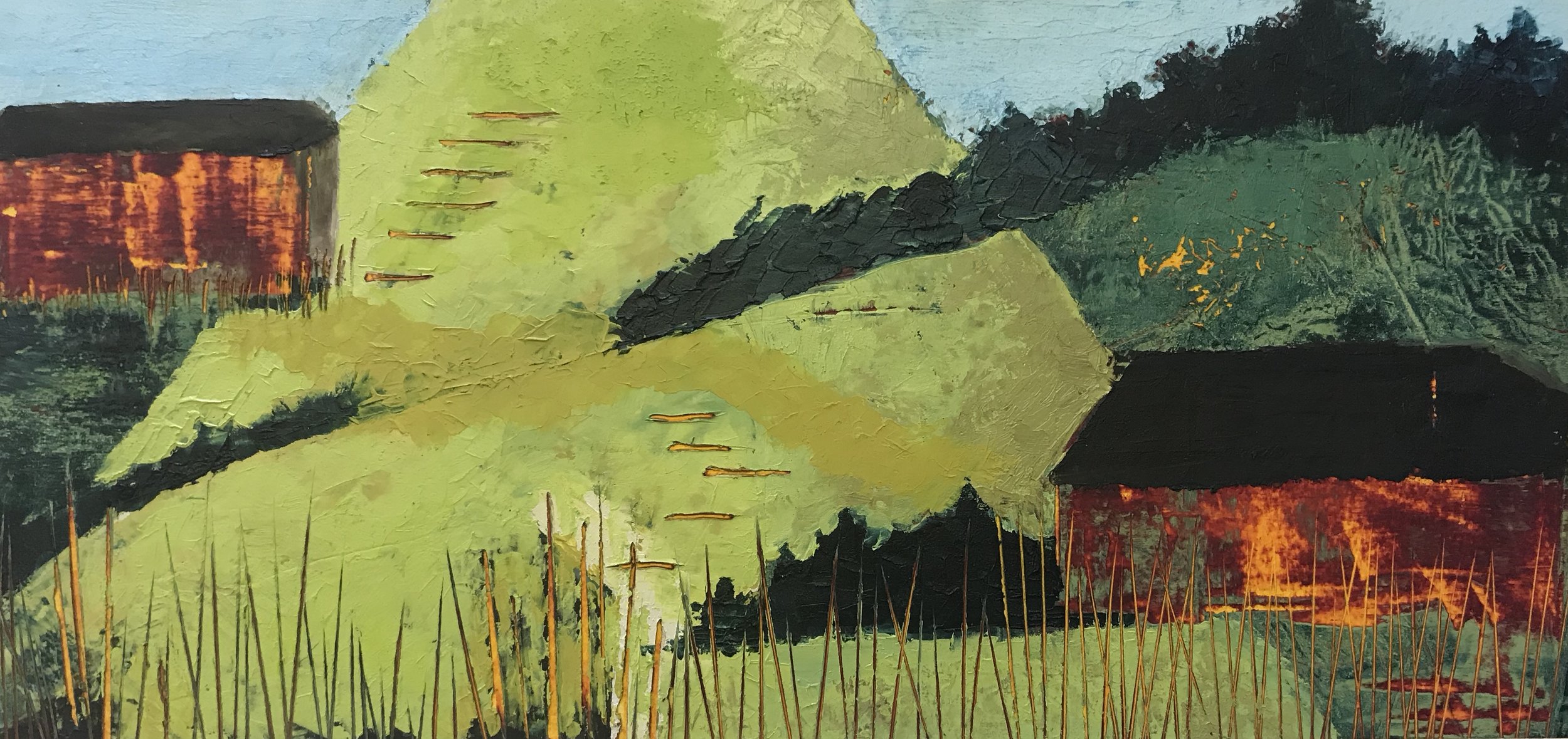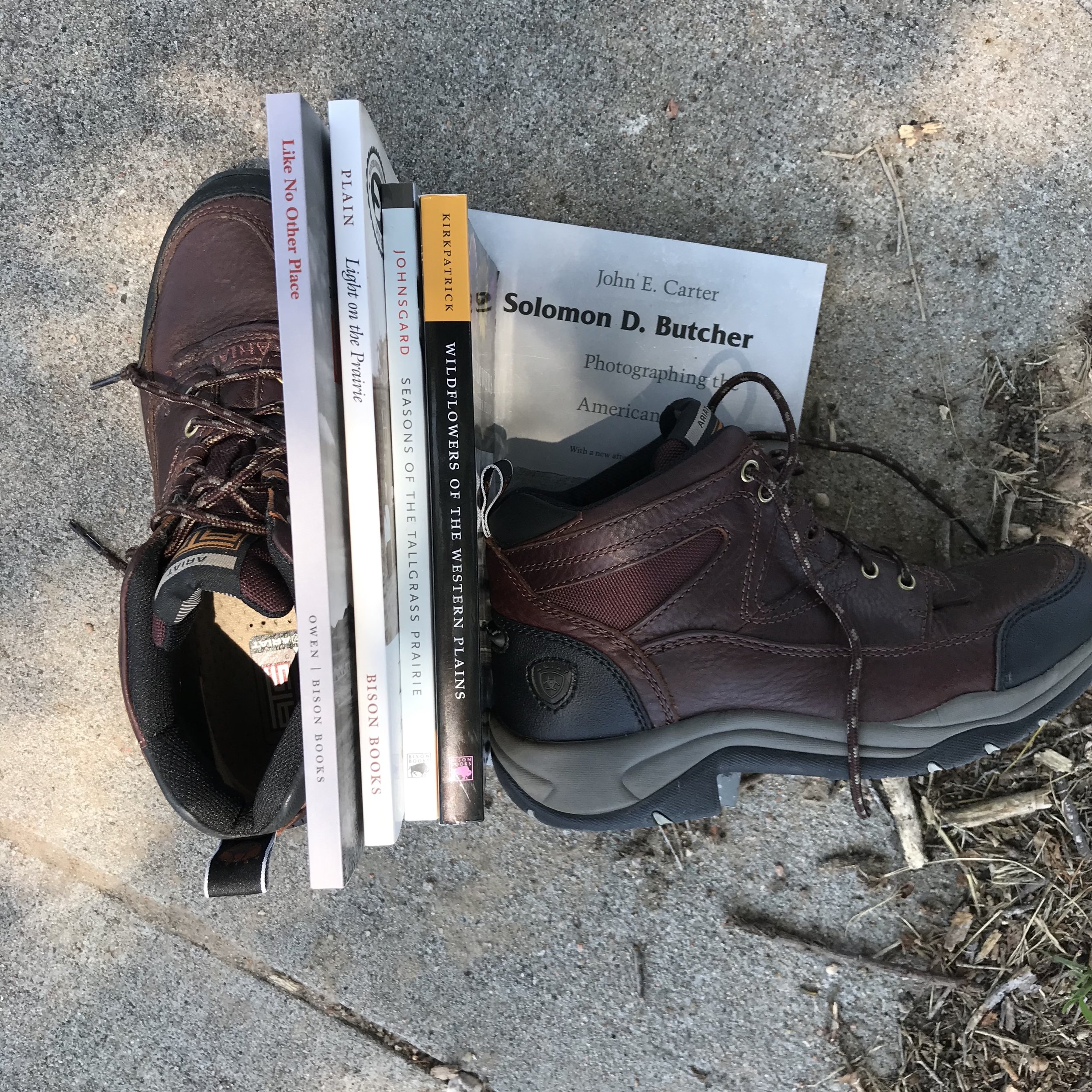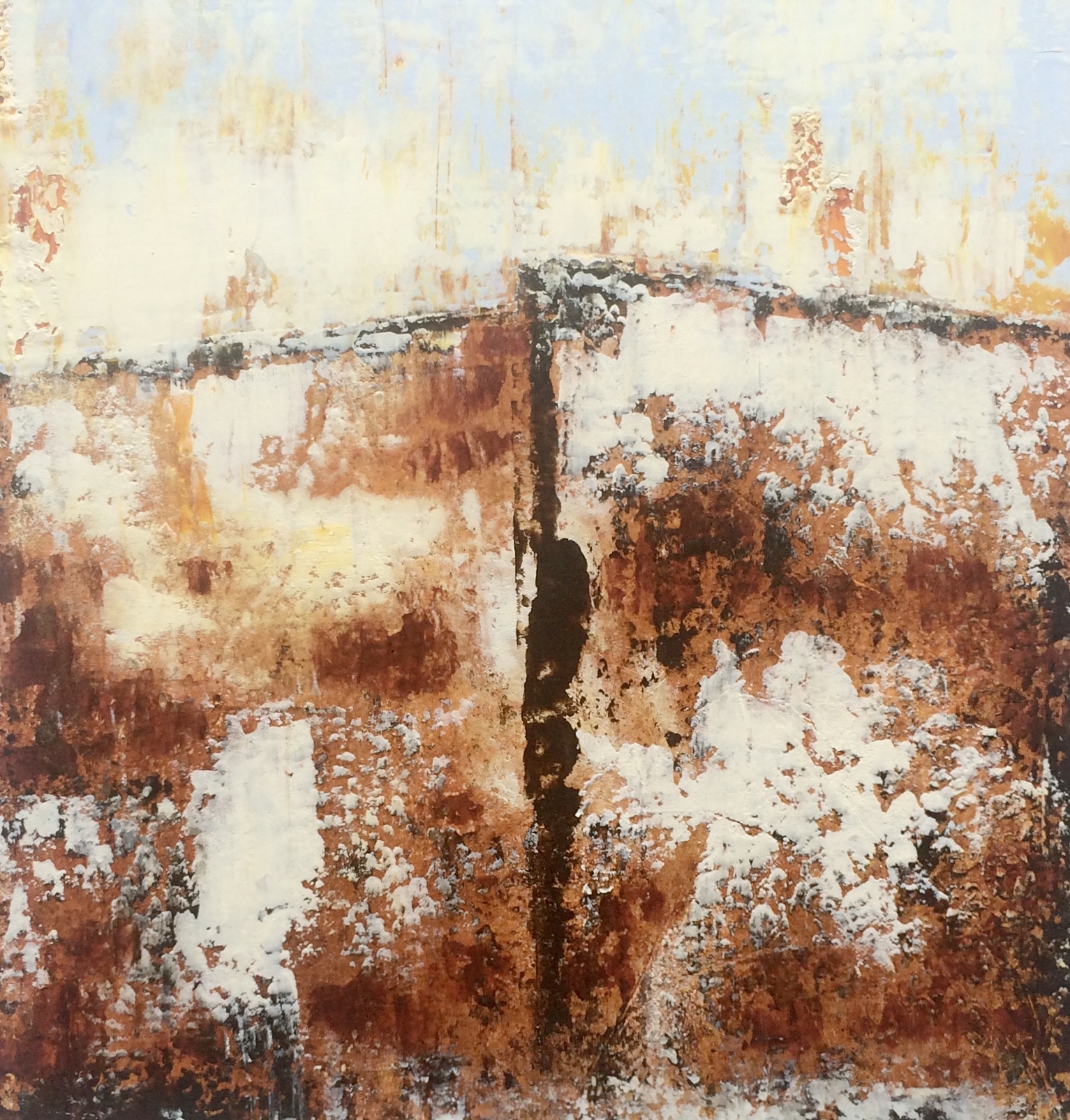In her book Bird by Bird: Some Instructions on Writing and Life, Anne Lamott refers often to the “shitty first draft” as she encourages writers to get something, anything on paper as a way to begin. It rarely is anything worth keeping.
The lesson applies to painting, too, and when I’m working on paper, the shitty first drafts get tossed onto a shelf or cut up to use as gift tags or to collage into other pieces. Paintings on panels get multiple layers, so there is a long process of adding and taking away until I’m pleased with what’s appearing on the surface. I started those cloud paintings during my recent artist residency at Cedar Point Biological Station as a way to get started with something. I also played around pressing leaves into paint, using dried stalks as tools for making marks and sprinkling sand into wet paint. None of these experiments yielded anything worth sharing, but were part of my exploring the place in my work. The puffy clouds will either get cut into pieces or covered with additional layers until they are unrecognizable as these particular works.
I did make two paintings explicitly based on the shapes and colors of the landscape at Cedar Point and share images below. While they’ll both get signed and probably framed, I’m really only happy with one of them. The second painting has an ease about it while the first one feels overworked. It’s also true that what I see as overworked may actually appeal to a particular viewer because it’s a bit more literal and does have some whimsy about it.
one of two paintings on paper based explicitly on the Cedar Point landscape.
Another painting on paper based on Cedar Point. I prefer this painting for the flow of the composition, the variety of textures and the sense of ease it conveys.













